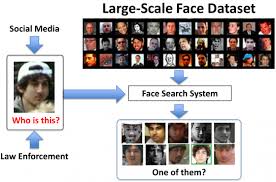Have you ever come across someone who looks almost identical to you or a person you know? The concept of similar faces has fascinated people for centuries, and with advancements in technology, the search for look-alikes has become more intriguing than ever. “Similar Face 7” is a term that can be interpreted in different ways—whether it’s about facial recognition technology, doppelgängers, or theories about human resemblance.

In this article, we will explore the science behind similar faces, the probability of having a look-alike, and how facial recognition technology is shaping the future.
What Is “Similar Face 7”?
The phrase “Similar Face 7” doesn’t have a widely recognized definition but can refer to various concepts related to facial similarities, including:
- Doppelgänger Theory – The belief that every person has at least seven look-alikes in the world.
- Facial Recognition Technology – AI-powered tools that identify and compare faces.
- Numerology & Face Patterns – Some theories suggest that faces share similar structures based on a set of numerical patterns.
Let’s break down these aspects in more detail.
The Science Behind Similar Faces
1. Are There Really Seven People Who Look Like You?
A common myth suggests that each person has seven doppelgängers somewhere in the world. While there is no scientific proof of this exact number, studies show that facial similarities are not as rare as we think.
According to research conducted by scientists at the University of Adelaide, the chances of finding someone with nearly identical facial features are 1 in 135. However, a true identical doppelgänger (with the same facial proportions, bone structure, and expressions) is much rarer.
Factors that influence facial similarity include:
- Genetics – Family members often share similar features, but unrelated people can also have genetic similarities.
- Ethnicity & Ancestry – People from the same region may have common facial traits due to shared ancestry.
- Coincidence – Random genetic combinations can result in look-alikes.
2. The Role of AI in Finding Similar Faces
With advancements in facial recognition technology, AI can now analyze thousands of faces and find similarities based on:
- Facial shape
- Eye positioning
- Skin texture
- Symmetry
Popular apps like Google Face Recognition, Twin Strangers, and Find My Doppelgänger allow users to upload a photo and search for similar-looking people worldwide.
3. Celebrities with Famous Look-Alikes
Some celebrities have well-known doppelgängers, sparking viral debates on social media. Examples include:
- Keanu Reeves & Paul Mounet – A 19th-century French actor who looks eerily similar to Keanu.
- Margot Robbie & Jaime Pressly – Fans often mistake the two actresses for twins.
- Zayn Malik & Yusuf Cat Stevens – The singer Zayn has an uncanny resemblance to the legendary musician from the 1970s.
The Impact of Facial Similarity in Different Fields
1. Security & Law Enforcement
Facial recognition is widely used for criminal investigations and airport security to identify individuals. However, false positives (mistaking one person for another) remain a challenge.
2. Entertainment & Deepfakes
AI-generated deepfake technology can replicate faces, creating realistic videos that can be used for entertainment or misinformation.
3. Social Media Trends
People love using apps to find their “celebrity twin” or long-lost doppelgänger. Platforms like TikTok and Instagram have popularized facial similarity challenges.
Conclusion: Is “Similar Face 7” a Reality?
While the idea of having exactly seven look-alikes is more of a myth than a fact, science proves that facial similarities are more common than we think. Whether through genetics, AI technology, or pure coincidence, our faces may have unexpected matches around the world.
Have you ever met someone who looks just like you? Try a face-matching app and see if your doppelgänger exists! 🤯👀